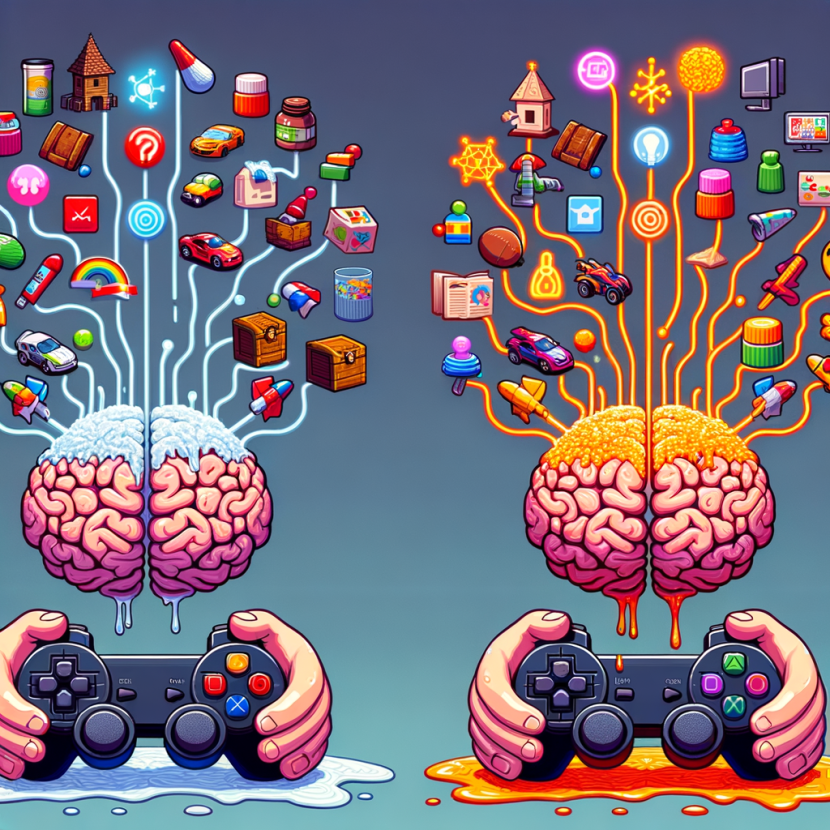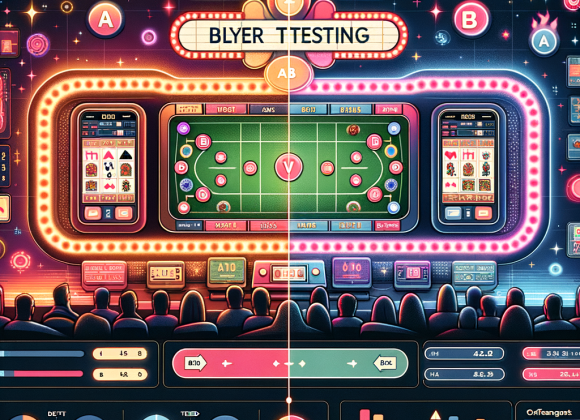In the bustling world of video games, not all titles enjoy the same fate. Some games become beloved staples, while others fade into obscurity. What separates these "sticky" games from those that lose players rapidly? Understanding the psychology of retention reveals the enchanting ingredients that keep players glued to their screens. In this article, we’ll explore various aspects, from engagement and gamification to community, challenge, rewards, and storytelling—all essential components in the captivating world of gaming.
The Magic of Engagement: What Keeps Players Coming Back?
Engagement is the enchanting allure that draws players into a game’s world and keeps them there. It’s not just about flashy graphics or complex mechanics; it’s about creating an experience that resonates with players emotionally. Games that offer immersive environments and interactive narratives often see higher retention rates.
Moreover, the user interface (UI) plays a pivotal role in engagement. A clean, intuitive design allows players to navigate the game effortlessly. Think of titles like "Stardew Valley" or "Animal Crossing," where the user experience feels seamless, encouraging players to explore and enjoy every facet of the game.
Incorporating elements that allow players to express themselves or customize their experience can further enhance engagement. Games that provide character customization options or creative building tools often keep players returning to experiment and showcase their unique styles. This personal touch fosters a sense of ownership and investment in the game world.
Additionally, timely updates and new content releases are crucial. Games that continuously evolve with fresh challenges or seasonal events keep the excitement alive. Players feel a sense of anticipation, knowing that there’s always something new to explore or achieve.
Lastly, a compelling progression system is vital. Players need to feel that their time and effort are being rewarded. Whether it’s leveling up their character or unlocking new features, a well-thought-out progression system can create a lingering pull, nudging players to return.
In summary, creating an engaging atmosphere involves more than just gameplay mechanics; it requires emotional investment, user-friendly design, personalized experiences, regular updates, and a rewarding progression system.
Gamification Galore: Turning Mundane into Memorable Fun!
Gamification transforms mundane tasks into thrilling challenges. By introducing game-like elements such as points, badges, and leaderboards, developers tap into players’ intrinsic motivations. This approach not only enhances fun but also promotes learning and skill development within a gaming context.
When games incorporate achievements and rewards for completing tasks, they create a sense of accomplishment. This might be as simple as earning a badge for finishing a level or unlocking a special item for reaching a milestone. These small victories can be incredibly motivating, compelling players to push their limits.
The use of challenges and competitions can also be a powerful gamification tool. Introducing time-limited events or community challenges can create urgency and excitement, encouraging players to participate actively. Daily quests or achievements that encourage players to log in frequently can significantly boost retention.
A well-structured difficulty curve is essential in gamification. Games that start easy and progressively increase in complexity help players feel a continuous sense of improvement. This balance keeps players engaged without overwhelming them, increasing the likelihood they will return for more.
Moreover, integrating social elements such as sharing achievements on social media or competing against friends amplifies the excitement. Players thrive on recognition, and by sharing their accomplishments, they invite others into their gaming experiences, fostering a sense of community.
In essence, gamification can elevate a game’s appeal by providing rewarding experiences, pushing players to challenge themselves, and creating an environment where competition and celebration go hand in hand.
Building Bonds: The Role of Community in Game Retention
A thriving community can be the lifeblood of a game. Players often seek connection, and when a game fosters a sense of belonging, it becomes a sticky experience. Games that prioritize community engagement see higher retention rates as players form bonds over shared interests and experiences.
Online forums, social media groups, and in-game chat features allow players to collaborate, strategize, and share their experiences. These interactions create a vibrant ecosystem where players feel supported and valued. Titles like "World of Warcraft" and "Fortnite" exemplify this, encouraging players to join forces for quests and events.
Community events further enhance this sense of belonging. Developer-led tournaments, fan art competitions, or community challenges can bring players together, creating shared experiences that deepen their investment in the game. When players feel part of something larger, they are more likely to return.
Moreover, responsive developers who actively engage with their communities generate loyalty. Listening to player feedback and implementing changes based on community suggestions fosters a sense of partnership. This level of engagement helps players feel that their voices matter, creating stronger bonds between the game and its audience.
Additionally, fostering inclusivity within the community is essential. Games that promote diversity and welcome players from all backgrounds create a richer experience. A positive, inclusive environment encourages players to return, knowing they’ll be accepted and celebrated.
To sum it up, a strong community can be a game-changer. It builds connections, encourages collaboration, and fosters loyalty, making players eager to return to their favorite virtual worlds.
Challenge Accepted: Why Difficulty Levels Matter in Games
The challenge presented by a game can significantly impact player retention. Games that manage to strike the right balance between being challenging and accessible are often the ones players return to repeatedly. A well-designed difficulty curve can enhance enjoyment and encourage perseverance without leading to frustration.
Games that offer adjustable difficulty settings can cater to a broader audience. This flexibility allows casual players to enjoy the game without feeling overwhelmed, while seasoned gamers can seek out the thrill of a greater challenge. Personalization keeps players engaged, as they can tailor the experience to their skill level.
Progressive challenges, such as unlocking new levels or abilities, can also motivate players to keep coming back. When players feel a sense of growth—be it through mastering mechanics or overcoming difficult bosses—they are more likely to return to keep honing their skills.
Moreover, the psychological concept of the "flow state" plays a significant role. When players are adequately challenged, they enter a state of flow where they lose track of time and become utterly absorbed. Games that successfully induce this state often cultivate loyal, returning players, as they are consistently drawn into the experience.
However, games that are too easy can lead to boredom, while those that are too difficult can result in frustration, leading to disengagement. Striking the right balance is essential in keeping players engaged and eager for more.
In conclusion, the challenge level in a game is a crucial factor in retention. By offering adjustable difficulties, progressive challenges, and the potential for peak experiences, developers can create an engaging environment that players want to return to.
Rewards and Achievements: The Sweet Taste of Success!
Reward systems are essential in maintaining player motivation and satisfaction. Achievements, milestones, and in-game rewards create a cycle of positive reinforcement that keeps players returning for more. The thrill of unlocking achievements or receiving items amplifies the gaming experience, leading to longer play sessions.
Games that integrate well-defined reward systems encourage players to set goals. Whether it’s reaching a certain level, collecting in-game items, or completing a challenging quest, the desire to achieve can be a strong draw. This goal-oriented approach keeps players engaged as they work toward their next big reward.
Moreover, the social aspect of rewards can be impactful. Sharing achievements with friends or within the community fosters a sense of pride and accomplishment. Players often gain motivation from seeing others succeed, further fueling their desire to achieve.
Seasonal events that offer exclusive rewards can reignite interest. When players know that time-limited rewards are available, it creates urgency and excitement, drawing them back into the game to participate in the festivities.
In-game currencies, loot boxes, and crafting systems can also enhance the reward experience. Players enjoy the anticipation of opening a loot box or crafting a desired item, as it adds an element of surprise and excitement. These mechanics can keep the gameplay fresh and engaging.
All in all, reward systems are integral to game retention. By providing clear goals, social recognition, and elements of surprise, developers can create a rewarding experience that keeps players returning time and time again.
The Power of Storytelling: Crafting Unforgettable Narratives
At the heart of many successful games lies a captivating story. Players are drawn not just to gameplay mechanics but also to the narratives that unfold within the virtual realms. A well-crafted story can evoke emotions, making players feel connected to characters and invested in their journeys.
Games that offer rich lore and compelling character arcs often see higher retention rates. Players are more likely to return to uncover the next chapter in the story or to see how their choices impact the narrative. Titles like "The Witcher" series or "The Last of Us" showcase how powerful storytelling can draw players back into the world.
Moreover, interactive narratives allow players to influence the outcome of events. Games that offer branching paths or multiple endings create a sense of agency, encouraging players to explore different possibilities. The desire to see all potential outcomes can keep players engaged long after they’ve completed the initial storyline.
Atmospheric elements such as music, art direction, and voice acting contribute to the storytelling experience, immersing players further into the narrative. A game that excels in these areas can create memorable moments that linger long after the console is turned off.
Additionally, emotional engagement is paramount. Games that evoke feelings—be it joy, sadness, or nostalgia—create lasting connections. When players form emotional attachments to characters and storylines, they are more likely to return to relive those experiences.
In summary, storytelling is a potent tool in game retention. By crafting compelling narratives, offering player agency, and evoking emotions, developers can create a rich tapestry that players want to revisit time and again.
| Element | Importance in Retention | Examples |
|---|---|---|
| Engagement | Creates emotional investment, leading to repeat play. | "Stardew Valley," "Animal Crossing" |
| Gamification | Encourages participation through rewards and challenges. | Achievements, leaderboards |
| Community | Fosters camaraderie and a sense of belonging. | "World of Warcraft," "Fortnite" |
| Challenge | Balances access and challenge for diverse players. | Adjustable difficulty settings |
| Rewards | Provides motivation through goal completion. | Loot boxes, seasonal rewards |
| Storytelling | Engages players emotionally through narrative depth. | "The Witcher," "The Last of Us" |
Q&A Section
Q: What makes a game "sticky"?
A: A "sticky" game effectively engages players through emotional investment, rewarding experiences, and an immersive environment, compelling them to return frequently.
Q: How does community influence player retention?
A: A strong community fosters connections among players, creating a sense of belonging and shared experiences that encourage players to return.
Q: Why are rewards important in gaming?
A: Rewards provide motivation and a sense of accomplishment, helping players set and achieve goals, which keeps them engaged in the game.
Q: What role does storytelling play in game retention?
A: Compelling narratives evoke emotions and allow players to connect deeply with characters and events, making them more likely to return to experience the story further.
Q: How can game developers create a balanced challenge?
A: Developers can offer adjustable difficulty settings and implement a progressive challenge system to cater to a wide range of skill levels without overwhelming players.
Q: What is gamification, and why is it effective?
A: Gamification incorporates game-like elements into non-game contexts to enhance motivation and engagement. It’s effective because it turns mundane tasks into rewarding challenges.
In conclusion, the psychology of retention is multifaceted, encompassing engagement, gamification, community, challenge, rewards, and storytelling. By understanding and leveraging these elements, developers can create sticky games that players will love and return to time and again!




